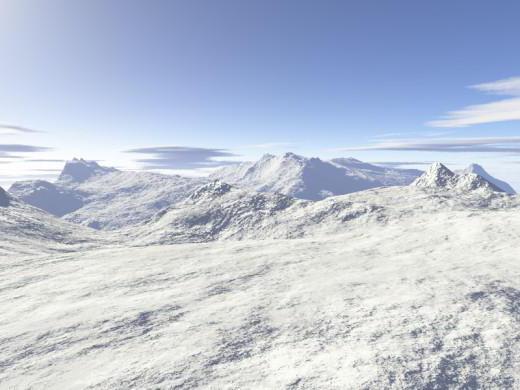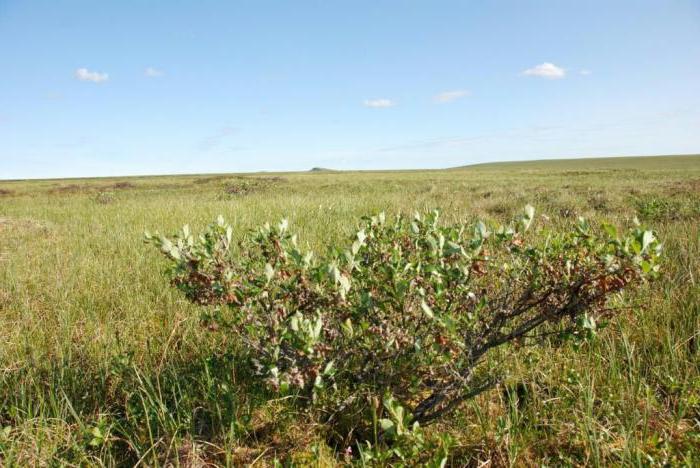The tundra is a vast area with a harsh climate. What plants are able to survive under these conditions, what soil covers permafrost, how it is used in agriculture, read this article.
Tundra Description
This zone of nature occupies a vast territory from the Kola Peninsula to the Chukchi Peninsula. Their coast is washed by the Arctic Ocean. The climate of the tundra is characterized by low air temperature, short summers and harsh winters, which lasts up to nine months a year.
Tundra characteristic the cold period is associated with the prevailing south winds blowing from the mainland. In summer, unstable weather is observed with frequent and strong northerly winds. They bring cooling and heavy rainfall, the average annual amount of which reaches four hundred millimeters. Snow covers the surface of the soil almost all year round, up to two hundred and seventy days.
What is the soil in the tundra? This zone is distinguished by peat-bog and slightly podzolic soils. A characteristic feature is the presence of swamps. Their formation is associated with permafrost, which has water-resistant properties.
The tundra of Russia is a zone with a low population density. Indigenous peoples live here : Nenets, Chukchi, Yakuts, Saami and others. Their main occupation is reindeer herding. A description of the tundra is impossible without mentioning the places of extraction of mineral resources, such as gold, apatite, nepheline, ore, and much more. Railroad tracks do not satisfy the ever-growing needs of the population. This is due to permafrost, which prevents the construction of roads.
What are the tundra?
The tundra is a natural zone that lies above the northern reaches of forest vegetation. This is a permafrost territory that is never flooded with the waters of seas and rivers. It is characterized by a large extent from north to south, this is reflected in climatic conditions within its zone. Therefore, the following types of tundra are distinguished:

- Arctic. They are occupied by islands of the same name, covered with mosses, lichens and rarely flowering plants. The latter are perennial grasses and small shrubs. Willow and dryad, which is often called partridge grass, are common here. Perennial herbs are represented by polar poppy, small sedge, some cereals and saxifrages.
- The territory of distribution of the northern tundra is the mainland coast. They differ from the Arctic in that the vegetation cover of this zone is closed. The soil of the tundra is ninety percent covered with green mosses and bushy lichens. Moss grows here. Flower plants are becoming more diverse. You can meet a burn, saxifrage or highlander viviparous. Of shrubbery plants - lingonberries, blueberries, ledum, willow, dwarf birch.

- The southern tundra of Russia, like the northern one, is distinguished by a continuous vegetation cover that covers the soil in tiers. Willow and dwarf birch prevail in the upper row, shrubs and grasses on average, and lichens and mosses dominate in the lower row.
How do plants survive in harsh conditions?
The climate of the tundra forced many plants to acquire so-called adaptations. For example, plants in which shoots creep or crawl along the surface of the soil, and the leaves are collected in a rosette, use surface layers of air. Undersized flora helps to survive the snow cover.
In summer, plants struggle to retain moisture, reducing leaves in size. Thus, the evaporating surface is reduced, which contributes to fluid retention. For example, the dryad and polar willow have their own devices, thanks to which they survive. On the underside of the plants there is a dense pubescence that interferes with the movement of air. This helps to reduce evaporation. Mostly perennial plants grow in the tundra. Some of them are viviparous, that is, fruits and seeds are replaced by bulbs and tubers. Such plants take root faster. This allows you to win valuable time.
When is the tundra beautiful?
This is observed twice a year. The first time the tundra is beautiful in August. During cloudberry ripening, the tundra changes green to red, and then, when the berry ripens, to bright yellow. Cloudberry is the closest relative of raspberries and belongs to perennial herbaceous plants. Her stems are not covered with thorns, and the flowers are much larger. An interesting fact is that unripe fruits are red and ripe fruits are orange. Residents of the tundra appreciate cloudberries. They make jam from her berries. The fruits are consumed in soaked and steamed form.
The second time the beauty of the tundra is pronounced in September, because this month is called the golden autumn. The leaves of the trees turn yellow, from which everything around sparkles. This time is loved by mushroom pickers. The soil of the tundra at this time is so favorable that mushrooms grow here, which reach the height of local trees. It is noteworthy that they are not at all wormy.
Gley soils
By mechanical composition, they belong to heavy soils: loamy and clayey. The place of occurrence is steep glacial plains. Permafrost thaws to a depth of fifty-one hundred and fifty centimeters. Tundra-gley soils are completely leached, that is, they do not contain easily soluble salts and carbonates.
But they are rich in weathering products and humus, whose content in the upper horizon is ten percent. Peaty as well as humus tundra soil contains forty percent of humus. Different subzones have different soil reactions. In one area it is acidic, in another it is slightly acidic, and in the third it is neutral.
Morphological structure of the soil
- The upper layer is a kind of litter of decaying mosses and lichens. Its power is three to five centimeters.
- A horizon consisting of rough humus or humus with a capacity of up to twelve centimeters. It is a moist loam of dark brown or dark gray color with densely intertwined roots. Such soil has an uneven border and a clear transition.
- The horizon, whose power is eight to twelve centimeters. It is called illuvial. It is colored unevenly; the background is brown with rusty and pale-gray spots. This is a loamy horizon with numerous roots.
- The horizon is glue. Its power is twenty-twenty-five centimeters. What is the soil in the tundra? It is brown in color with blurry bluish spots. Sometimes rusty spots are visible against the general background. This is a loamy horizon, in rare cases - thixotropic. Differs in humidity and a small number of roots.
- The horizon is illuvial. Its power is twelve to fifteen centimeters. It is colored unevenly, the background is brown. There are dark bluish and rusty spots. The horizon is loamy, quite moist, with a small content of roots. The permafrost is viewed below. It is often thixotropic.
- Gley loamy horizon of a dark bluish color. It contains many veins of ice.
What is the phenomenon of thixotropy?
This is such a condition when highly moistened soils, when mechanically exposed to them, are able to change their state from a viscous-plastic to a quicksand mass. After some time, the soil returns to its original state. Moreover, the humidity does not decrease. Continental tundra is rarely affected by the phenomenon of thixotropy, which decreases in subzones from north to south. This also applies to soil gleying.
The use of tundra soils in agriculture
The main industry in the Arctic tundra is reindeer herding. Very slowly, but agriculture is also moving forward. In some areas, potatoes, cabbage, radish, carrots, rutabaga and other vegetables were grown. At the experimental stations and state farms, some crops are also grown.
When developing new land plots, take into account adverse factors that are characteristic of tundra soils. Therefore, the main tasks of soil cultivation are their drainage, activation of biological processes, improving aeration, eliminating the harmful effects of permafrost, and much more. To make the soil suitable for agricultural use, it is fertilized with manure, peat, organic and mineral fertilizers. The soil of the tundra, under the influence of cultivation, is changing. The best indicator is a decrease in permafrost. Its effect on plant growth is significantly reduced.